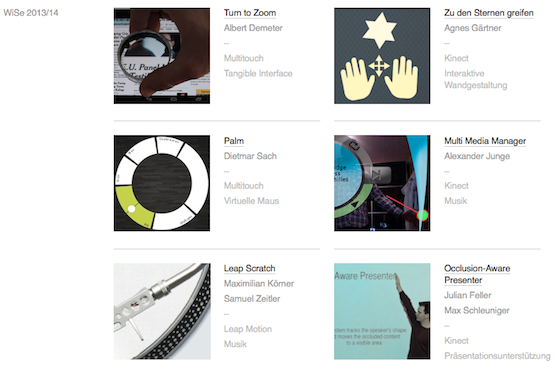Reäktor is a media-enhanced dance performance. It is a 6th semester student project in the Interactive Media programme at Augsburg University of Applied Sciences (summer 2012).
“Light Visual Art Dance Performance” Was passiert wenn man Licht, Performancekunst, Tanz und moderne Technologien wie Mapping und Tracing verbindet? Eine der Antworten darauf ist Reäktor – eine an der Fakultät für Gestaltung der Hochschule Augsburg entwickelte und erdachte Tanzaufführung, die eine Symbiose aus Echtzeit 3D Tracking, abstrakten Visuals, moderner elektronischen Musik und klassischem Tanz schafft. Es soll gezeigt werden, dass sich die unterschiedlichen Elemente keinesfalls ausschließen. Der Aufführung liegt eine Geschichte zugrunde, die von Begegnungen zwischen Menschen handelt und wie deren Begegnungen und Berührungen für Spuren in deren Leben und Umgebung hinterlassen. Diese Spuren werden durch abstrakte Licht und Schattenspiele dargestellt, die experimentell durch die Verwendung moderner 3D-Tracking-Methoden entstehen. Das Stück richtet sich an ein kulturell gebildetes Publikum und Medienkunst-Liebhaber mit einem besonderen Interesse für Tanz und neue Formen der damit verbundenen Performance. Die ambitionierte Gruppe von acht Studenten unter der Leitung von Herrn Prof. Rose und Herrn Prof. Kipp der Hochschule Augsburg arbeitet seit einem halben Jahr an einem Konzept und einer Realisation dieser Tanzaufführung in der ebenfalls Tänzer des Augsburger Theater-Ensembles vertreten sein werden.
Student team: Matthias Lohscheidt, Christian Unterberg, Sven ten Pas, Thomas Ott, Benjamin Knöfler, Michael Klein, Dennis Schnurer, Florian Krapp
Supervision: Prof. Robert Rose, Prof. Dr. Michael Kipp
